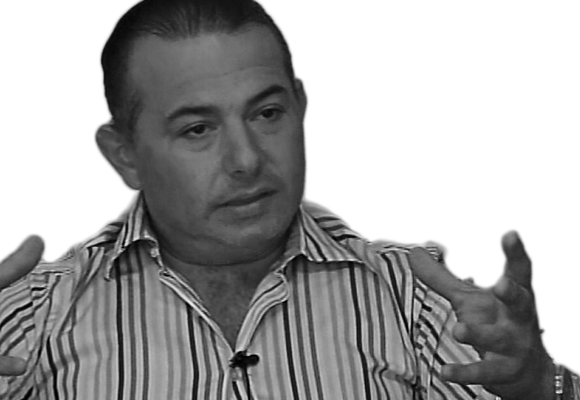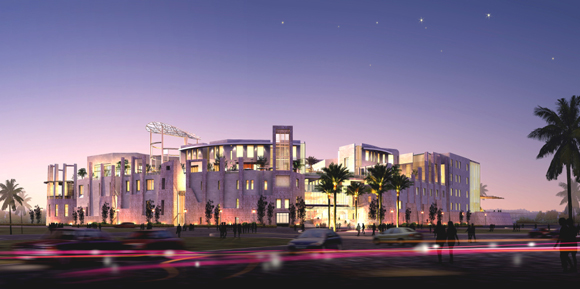Industrial Parks in Middle East
Our industrial zone employs 15,000 people and at one point had about 600 million US dollars of exports, there are fifty factories with tenants of 12 nationalities and international manufacturers.
Interview with Halim Salfiti, Chairman of Al Tajamouat

As the chairman of Al Tajamouat, a leading industrial, commercial, and real estate developer, what measures have you adopted to fight the global economic downturn?
We have adopted several measures. Mainly we have tightened our belts as much as we can to eliminate unnecessary expenditures, streamline our business to focus on what’s important, and reduce the bureaucracy and make things more systematic and organized. Unfortunately we have had to cut out certain projects so our expenditures towards expansion has more or less stopped and we have been choosy in what projects we have decided to continue.
For example at one point we were involved in building apartment buildings but we eventually decided that we had diversified too much and we had to abandon this project in order to survive the economic depression.
How would you define your core business?
As a real estate development company we pride ourselves in providing our investors with the complete package. We buy the land and develop whatever real estate they desire and we provide services to operate this real estate. We started off fifteen years ago and our companies are all open to public shareholding. Our first anchor project was an industrial zone that was the first and largest privately owned industrial city in Jordan and at this time (as it is today) we found that industrial zone developers in the Middle East are mostly governments but they only provide the minimum.
We then found that manufacturers want more and that many people don’t want to deal with the red tape and as such, would rather purchase something ready made and thus, we started our industrial zone development program. Our industrial zone employs 15000 people and at one point had about 600 million dollars of exports, there are fifty factories with tenants of 12 nationalities and international manufacturers. We provide them not only with buildings but also with a variety of services that allow them to generate more income and allows our industrial zone to be more attractive.

For example we have storage facilities, labor dormitories that house about 8000 workers, food catering services, and other facilities’ management services to help our investors. We also pride ourselves in that we act as though we are the local sponsor of our foreign tenants because we have dedicated people who help them obtain anything they need for their business.
How are the tax incentives for foreign tenants?
In Jordan we have a free-trade agreement with the US and the Arab world as well as with other countries worldwide. The most attractive free-trade agreement is with the US, however, and many of our foreign manufacturers come here to set up shop in order to export their goods to the US on a duty free basis.
You mentioned you are trying to build a similar industrial zone in Egypt, Syria, and perhaps Qatar. Can you explain your vision for international expansion?
Three years ago the Egyptian government obtained a QIZ agreement similar to the free-trade agreement that allows manufacturers in certain areas to export their goods to the US duty-free. The Egyptian government, after studying our industrial zone in Jordan, invited us because they found that in order to attract foreign manufacturers in Egypt you not only have to provide them with a plot of land, but also with the services to operate.
They provided us with an advantageous deal by providing us with the land under the pretenses that we had to develop in a certain amount of time, bring in investment, and develop all of our services in this industrial area. So far, things have been going well and we already have some anchor tenants like a Japanese company and the Shiya Group from Kuwait. Also, recently the Syrian government invited us to discuss the issue of setting up industrial zones for the private sector and now we have approval as a foreign company to purchase land there.
How would you describe your sales and marketing strategy? How do you attract new clients?
Our industrial zones attract medium and light industry- things that require labor intensive work. Industries that are in sync with the free-trade agreement with the US are also at an advantage and when we first looked at these industries we found that the garment industry for export was very attractive to our area because of the high customs duty on garments in the US.
We went to garment trade shows to advertised, researched the biggest garment companies and traveled to these places to persuade them to establish a branch factory in Jordan. Our main competitive edge is that we don’t sell land, we sell a ready-made factory building. The variety of services that we provide help the manufacturers have more productive factories as well.
You mentioned that you are 70% occupied, what is your plan for the 30% that remains? What companies would you like to attract?
As a result of the financial crisis we lost several of our manufacturers and we ended up with some empty buildings. Three or four years ago we started to diversify to include other manufacturers outside of the garment industry and now we have around twenty different kinds in the industrial zone. We also found we were too focused on manufacturers exporting to the US so we have tried to diversify in this respect as well.
The core of your business is the mall and you are currently building the most upscale mall in Jordan. Can you speak a little more about this?
We are trying to build a lifestyle center and we started this four or five years ago in the most high-end area of Jordan called Abdoun and it caters to western Amman (a more affluent area). Since we don’t have many malls in Jordan and people like the mall experience we decided to build. We have been employing the best experts in this endeavor and we chose fantastic architects (F and A) who have experience. We expect 10,000 cars pass by the mall an hour because of its accessible location and with that, we expect 7 million visitors a year and 25,000 people a day.
The mall will have 180 shops, 1800 parking places, and it will cost 220 million dollars to develop. 60% of the mall has already been leased out and the remaining 40% is being faced with 200% demand and our retail consultant is going to decide the best brands and the best things that will suit the mall. There will also be a high-end super market, a cinema, and a family entertainment center.
We are looking to sign on more people to the family entertainment center and we are looking for a large book store as well as a toy store. We want to pick the right retailers in order to satisfy the long-term sustainability for the project.
What is your vision for the future?
We want to focus on the core business of the company: industrial zone development. We feel that we have a special edge and that there aren’t many companies in the Middle East who do what we do because most of this is usually done by the government and they are unable to provide the services that we do.
We can take advantage of this by having discussions with different countries to facilitate reasonably priced land so we can set up industrial areas that will attract foreign tenants and bring jobs to the area to also benefit them. Ideally, in the future we are looking to develop in Saudi Arabia, Libya, and Qatar.